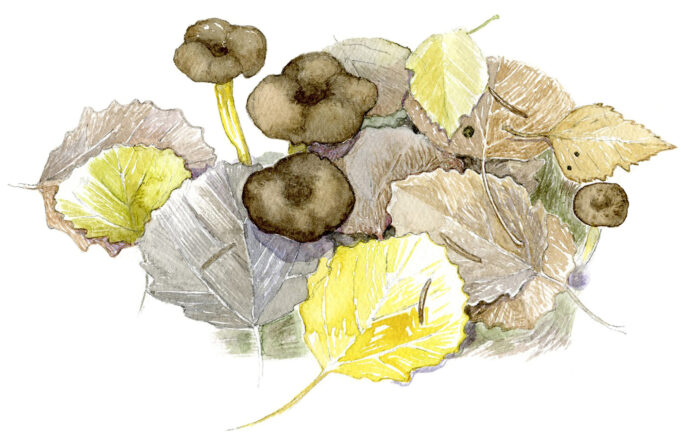World of Senses
Let’s sit back and relax. Leave the useless rush behind and enjoy just being in the moment. Can you hear a bird singing as you admire the landscape in front of you, leaning against a rough tree trunk and smelling the smoke from a nearby campfire? We often use our senses at the same time without ever thinking about it. But what if you could shut down all the other senses for a moment and focus on only one sense at a time?
Close your eyes and listen. What sounds is the forest making right now? Are the leaves rustling in the trees or is the snow crunching under your shoes? You can also listen to silence and quiet. Natural silence is said to be one of the planet’s most endangered resources.
Place your hands over your ears. Let’s focus for a second on our most primitive sense – the sense of smell. Can you smell the trees, flowers or mushrooms? You can also smell the freshness of the rain or the crispness of the frost.

Take a look around you. Focus on the details: the shape of the flower petals or snowflakes. Different shapes make you think about the intelligence of nature and how every detail has a purpose.
Focus on what you feel. In the forest, you can feel countless surfaces, such as the alluring softness of moss, the jaggedness of stones or the frozen trunk of a tree. You can also feel the touch of the wind and the warmth of the sun upon your skin.
Each season gives the forest many different flavours. Raspberries are sweet when ripe, while lingonberries taste sour and tart. The taste of mushrooms is described as “umami,” or meaty.
Everyone’s rights
While nature offers many different experiences for all our senses, let us remember to respect its delicate balance. Nature regenerates slowly and thus, when moving in the forest, you should avoid disturbing its balance. Please, walk on marked routes, respect forest animals and keep dogs on a leash.
Updated 7.2.2024